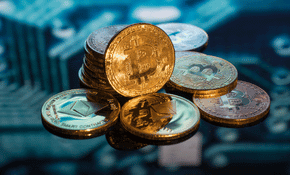In times of economic crisis, as communities struggle with instability and unpredictability, a silent threat—money laundering—intensifies behind the scenes. This illegal behavior exacerbates the negative effects of a recession by taking advantage of financial vulnerabilities. In this essay, we dig into the complex realm of money laundering and investigate how it flourishes in times of economic hardship. We hope to raise awareness of this important problem and develop a shared commitment to effectively combat money laundering by doing so.
Understanding Money Laundering
Money laundering is the practice used to conceal and make appear legitimate funds that have been obtained unlawfully. Its goal is to make unlawful revenues appear clean and usable within the legal, financial system while hiding their true sources. Placement, layering, and integration are the three processes that often make up money laundering.
Money laundering's motivations become more intense during an economic downturn. Financial hardship increases desperation and makes people and criminal organizations more likely to take advantage of flaws in the financial system. The sections that follow will cover some frequent methods of money laundering that are used when there is economic unrest.
Exploiting Economic Volatility
- An environment of increased uncertainty, decreased investor confidence, and swift currency value changes are produced by the turmoil in financial markets during an economic crisis. Money launderers thrive in this ideal environment of economic instability because they can easily take advantage of weaknesses and mask their illegal activities.
- Money manipulation Money launderers use the fluctuation of currency rates as a technique to increase their profits and hide the source of illicit payments. They use exchange rate discrepancies to strategically take advantage of currency value swings and money laundering. They can successfully conceal the sources of the money by converting their illegal gains into several currencies, and they can confuse investigators by weaving a complex web of transactions.
- Investment Plans: During economic downturns, distressed assets, struggling companies, and desperate business owners looking for capital are common. Profiting from these conditions, money launderers spend their illegal funds on failing businesses or shady investment schemes. By disguising the source of the cash as legitimate investments or commercial ventures, they not only hide their criminal origin but also profit from the confusion and desperation brought on by the economic crisis.
- Real Estate Transactions: During economic crises, money launderers frequently target the real estate industry because of its high-value transactions and complex ownership arrangements. Money launderers take advantage of the opportunity to integrate their illegal gains into the legal economy since property values are fluctuating and distressed sellers are eager to swiftly offload assets. They launder money while also accumulating valuable assets when they buy expensive residences with illegal money. By using this strategy, they can diversify their holdings while legalizing their illegitimate money.
- Furthermore, money launderers have a lot of room to hide the true ownership of properties and make it difficult to trace illicit funds due to the opaque nature of real estate transactions, which sometimes include many intermediaries and offshore corporations. They further conceal the shady sources of the money utilized for real estate purchases through complicated networks of shell companies, trusts, and nominee arrangements.
- It's crucial to understand that these are only a few instances of how money launderers take advantage of economic turbulence. Law enforcement authorities, financial institutions, and regulatory bodies must maintain constant monitoring and adapt to the changing terrain of money laundering strategies. We can better protect our financial institutions and the integrity of the global economy from the harmful consequences of money laundering during periods of economic crisis by staying ahead of the curve and implementing comprehensive anti-money laundering measures.
The Role of Financial Institutions
Financial institutions are essential in the fight against money laundering, but they might unintentionally exacerbate the issue during a recession. Some organizations may neglect due diligence measures as a result of growing financial demands and a focus on short-term survival, unintentionally aiding money laundering activities.
- Weakening of Compliance Procedures: Financial institutions' resources may be stretched thin during economic crises, which can lead to a reduction in compliance activities and a weakening of internal controls. These flaws give money launderers a chance to take advantage of weaknesses and conceal the movement of their illicit funds.
- Capital Flight: As people and organizations try to safeguard their assets and prepare for future economic downturns, financial crises frequently result in capital flight. Money launderers may take advantage of this cross-border money transfer to conceal the true source of the transferred funds by taking advantage of the chaotic environment.
Strengthening Anti-Money Laundering Measures
An integrated strategy is needed to effectively combat money laundering during a financial crisis. This includes strong laws, improved global collaboration, and thorough regulatory structures.
- Legislative Reforms: Governments must pass and enforce strict anti-money laundering regulations that cover a broad spectrum of financial transactions. To stay current with evolving money laundering methods and the difficulties presented by economic crises, these rules should be amended on a regular basis.
- Collaboration and Information Sharing: To effectively prevent money laundering, law enforcement authorities, and financial institutions must work together internationally. Transnational money laundering networks can be found and dismantled with the aid of intelligence sharing.
- Strengthened Due Diligence: Even in times of economic crisis, financial institutions must prioritize and strengthen their due diligence practices. This entails carrying out careful customer identification, putting in place reliable transaction monitoring systems, and routinely instructing staff members on spotting and reporting suspicious activity.
- Technology and Data Analytics: Using cutting-edge tools like artificial intelligence and machine learning can help with anti-money laundering operations. Financial institutions may more effectively identify and look into potential money laundering operations thanks to these systems' ability to analyze massive amounts of data, spot patterns, and spot abnormalities.
Conclusion
During economic downturns, money laundering poses a serious hazard by taking advantage of flaws in financial institutions and escalating the consequences of the recession. Understanding the numerous money laundering strategies used in these trying times will help us better equip ourselves to stop this illegal conduct. The key to combating money laundering during economic crises is to strengthen legal frameworks, encourage international cooperation, and improve due diligence methods. We cannot preserve the integrity of our financial systems and society from the terrible effects of money laundering without a shared commitment to transparency, accountability, and all-encompassing anti-money laundering measures.









